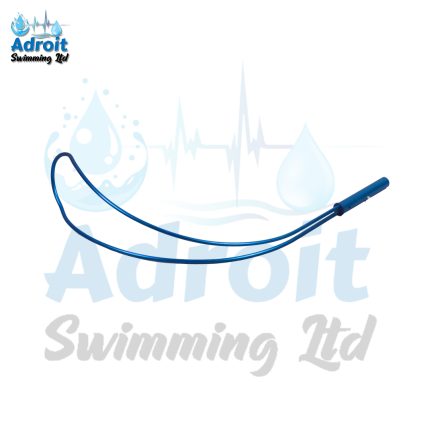Life Hook
A life hook for swimming pools is a crucial safety device designed to aid in rescue efforts during emergencies. Typically made from durable materials like aluminum or fiberglass, these hooks feature a long, sturdy handle and a curved, strong hook at the end. They allow lifeguards or pool users to reach and secure individuals in distress without needing to enter the water, ensuring both rescuer safety and efficiency. Life hooks are often brightly colored for visibility and can be easily mounted on pool walls for quick access. Essential for both public and private pools, they enhance overall safety and preparedness for potential water-related incidents.
Swimming Pool Life Hook: A Critical Safety Tool for Aquatic Environments
The swimming pool life hook is an essential safety device designed to enhance the security of pool areas and ensure the safety of swimmers. In emergencies, every second counts, and having the right equipment readily available can make all the difference. The life hook is specifically designed to assist in rescue situations, enabling lifeguards and pool owners to quickly reach and save individuals who may be in distress. This article will explore the features, benefits, and proper usage of the swimming pool life hook, emphasizing its importance in maintaining a safe swimming environment.Purpose and Design
The primary purpose of a swimming pool life hook is to provide an effective means of rescue for individuals who may be struggling in the water. This specialized tool allows lifeguards and trained individuals to extend their reach, facilitating the rescue of swimmers without putting themselves at risk. Typically made from lightweight yet durable materials such as aluminum or high-grade plastic, the life hook is designed for easy handling. Its design usually includes a long, sturdy handle with a hooked end that can grasp onto a swimmer or flotation device. Some models also feature a padded grip for comfort and stability during use, which is crucial when performing rescues. The life hook is often brightly colored for high visibility, making it easy to spot in emergency situations. Additionally, many designs incorporate a buoyant feature, allowing the hook to float if accidentally dropped in the water.Key Features of the Swimming Pool Life Hook
- Long Reach: The extended handle allows lifeguards to reach struggling swimmers from a safe distance, reducing the need to enter the water unnecessarily. This is especially important in situations where the distressed swimmer may be panicking.
- Durable Construction: Made from materials that withstand exposure to water and chemicals found in swimming pools, life hooks are designed for longevity and reliability in various aquatic environments.
- Lightweight Design: The lightweight nature of the life hook makes it easy to maneuver, allowing lifeguards to act quickly in emergencies without fatigue.
- Padded Grip: Many life hooks feature a padded or textured grip that ensures a secure hold during a rescue operation, even in wet conditions.
- Floating Ability: Some models are designed to float, making retrieval easy if accidentally dropped into the water during a rescue attempt.
Benefits of Using a Swimming Pool Life Hook
- Enhanced Safety: The life hook is an essential safety tool that improves the chances of a successful rescue. By allowing lifeguards to extend their reach, it minimizes risks to the rescuer while providing immediate assistance to the swimmer in distress.
- Quick Response: In emergency situations, time is of the essence. The life hook enables lifeguards to quickly and effectively reach individuals in need, helping to prevent drowning incidents and ensuring a swift response to emergencies.
- Versatile Use: The life hook is not only useful for water rescues but can also be employed for various tasks around the pool area, such as retrieving floating objects or even securing safety equipment.
- Cost-Effective Investment: Implementing safety measures is vital for any pool facility. A life hook is a relatively low-cost investment that significantly enhances the safety of swimmers, providing peace of mind for pool owners and operators.
- Training Tool: The life hook can also serve as a training tool for lifeguards and swimmers, helping them practice rescue techniques and improve their response skills in emergency situations.
Proper Usage of the Life Hook
To maximize the effectiveness of the swimming pool life hook, it is essential to understand its proper use:- Identify the Situation: Before attempting a rescue, assess the situation to determine the best approach. If the swimmer is conscious and able to cooperate, encourage them to reach for the hook.
- Extend the Hook: Approach the distressed swimmer calmly and extend the life hook toward them. Aim to get the hooked end close enough for them to grab onto, ensuring they have something stable to hold onto.
- Avoid Risking Safety: Lifeguards should avoid entering the water unless absolutely necessary. The life hook allows them to maintain a safe distance while still providing assistance.
- Pull Gently: Once the swimmer has grasped the hook, pull gently and steadily, providing support as they are brought to safety. Avoid sudden movements that may cause further panic or distress.
- Conduct Follow-Up Care: After a rescue, assess the swimmer for any signs of distress, injury, or exhaustion. If necessary, provide first aid or call for medical assistance.
Maintenance of the Swimming Pool Life Hook
Proper maintenance ensures the life hook remains effective and reliable:- Regular Inspections: Periodically check the life hook for any signs of wear, damage, or corrosion. Ensure that the handle is secure and that the hook is intact.
- Clean After Use: Rinse the life hook with fresh water after each use to remove chlorine and debris. This helps prevent deterioration and maintains its appearance.
- Store Properly: Store the life hook in a dry, cool place away from direct sunlight when not in use. This protects the materials from environmental damage and prolongs its lifespan.
- Training and Drills: Regularly practice rescue techniques using the life hook to ensure all lifeguards and staff are familiar with its use. This keeps everyone prepared for emergencies.


















